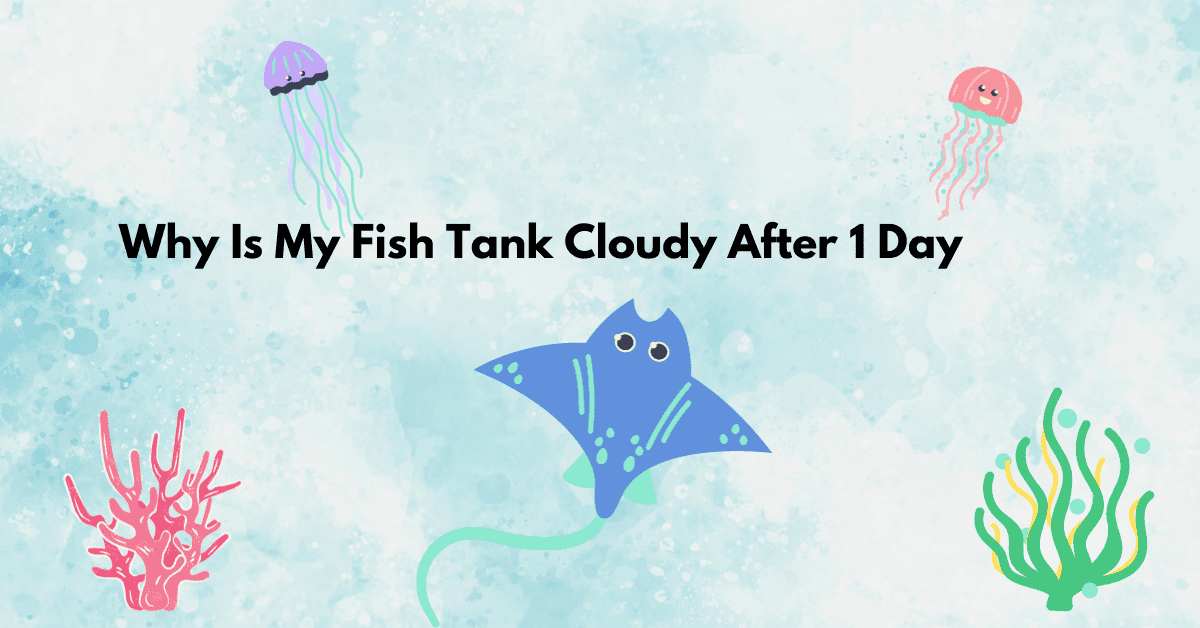It can be rather annoying to deal with murky water in your aquarium after only one day, since it hinders your ability to fully appreciate the splendor of your aquatic habitat. Learn what’s causing the haze in your aquarium and how to quickly remove it with the help of this helpful tutorial.
To make an accurate assessment of the water quality, take a small amount of water from the tank and pour it into a clean, white cup or bucket. Now you can see the water’s color and clarity without any interference.
1. Particles in the Water: Debris from the ground, leftover food, or fish poop are common causes of water cloudiness. It is essential to change the water in the tank and vacuum the substrate with an aquarium siphon on a regular basis. Equally crucial to keeping the filter from collecting debris is cleaning it once a month. When you see cloudiness that won’t go away, it’s best to switch to a cleaner fish food.
In order to improve mechanical filtration for bottom-feeding fish that disturb the substrate, you can use a variety of filter pads to catch particles and add filters. Another option for water clarifiers that might help aggregate particles for simpler filtering is the use of certain chemicals or clays.
2. Bacterial Bloom: When there are too many nutrients and not enough good bacteria, it can lead to a bacterial bloom, which looks like milky water with very few visible particles. Do not resort to quick fixes, such as ultraviolet (UV) sterilizers or frequent water changes. On the contrary, give it a week or two and the bacteria will spontaneously reestablish themselves, purifying the water.
3. Green Water: If your water seems green in color, it’s because of an algal bloom, which is usually the result of too much light and nutrients. It will persist even after you change the water and use fine filter floss. Take into consideration a dark period, where the tank is covered and the light is turned off for 7 to 10 days, after which a water change is performed. Another option is to modify the architecture of the algae’s cells using a UV sterilizer so that they can’t reproduce.
4. Brown Water: Tannins in catalpa leaves, driftwood, or other plant detritus can turn water brown. You can slow the process down by changing the water on your own, or you can speed it up by soaking or boiling fresh driftwood. Additional methods for removing tannin-induced discoloration include chemical filtration with activated charcoal or Seachem Purigen.
5. Cloudy Aquarium Walls: If the water in your cup doesn’t seem cloudy, check the walls of your aquarium. Be careful not to micro scratch acrylic tanks when cleaning them; instead, use an algae scraper on the inside and an aquarium-safe cleaner on the outside. Use an aquarium background to avoid the artificial haze caused by nearby lights.
You can swiftly get your fish tank clear again by learning about and fixing these issues, so you can enjoy seeing all the beautiful aquatic life that lives there.

Lena Whitmore is the lead writer at FishClans.com, bringing over 10 years of fishkeeping expertise and a master’s degree in Marine Biology to the site. Her extensive knowledge and practical tips have established her as a respected authority in the aquarist community. Lena’s work has appeared in leading publications and she frequently speaks at industry events.
Connect with Lena and FishClans on Facebook, Pinterest, and Instagram.

